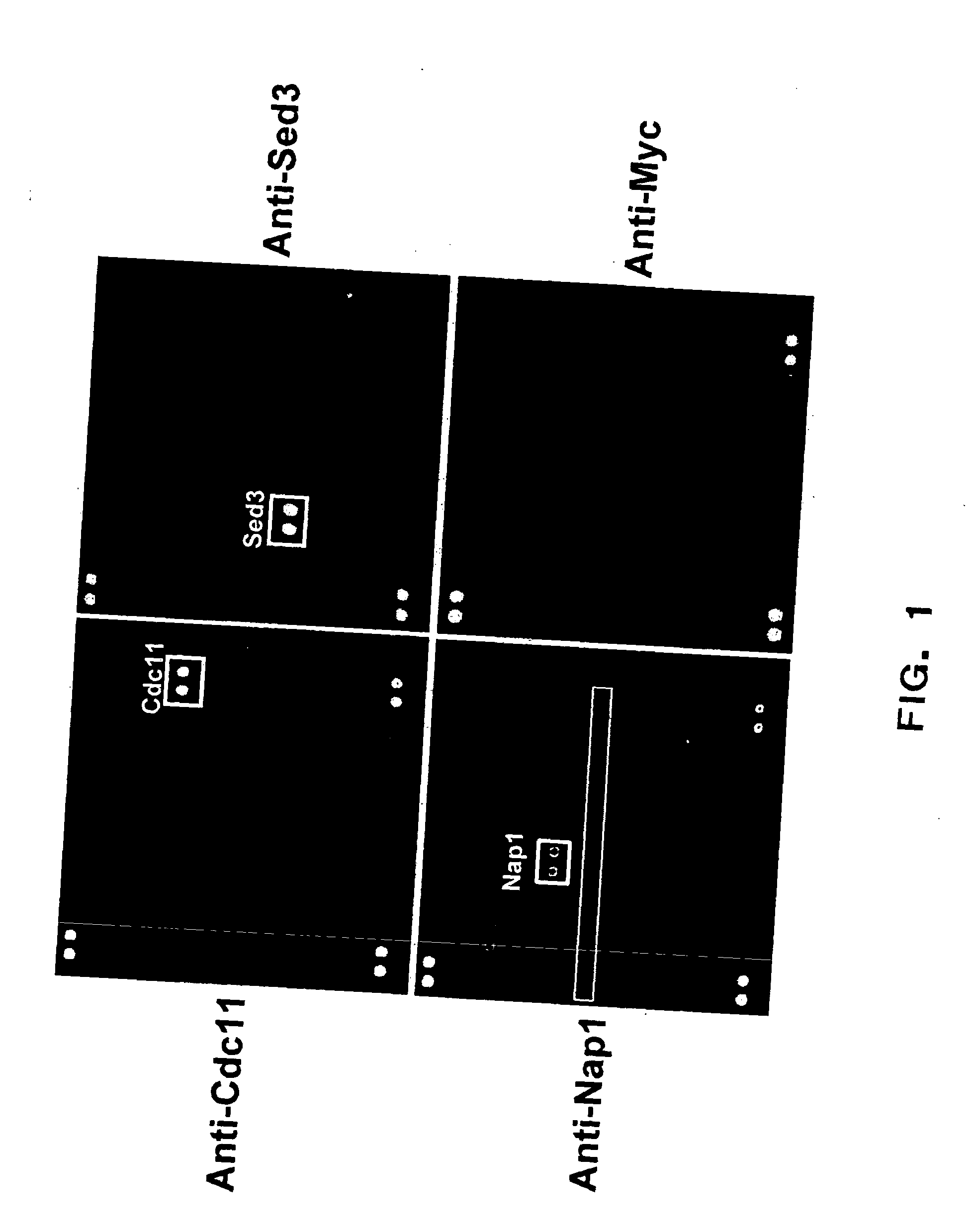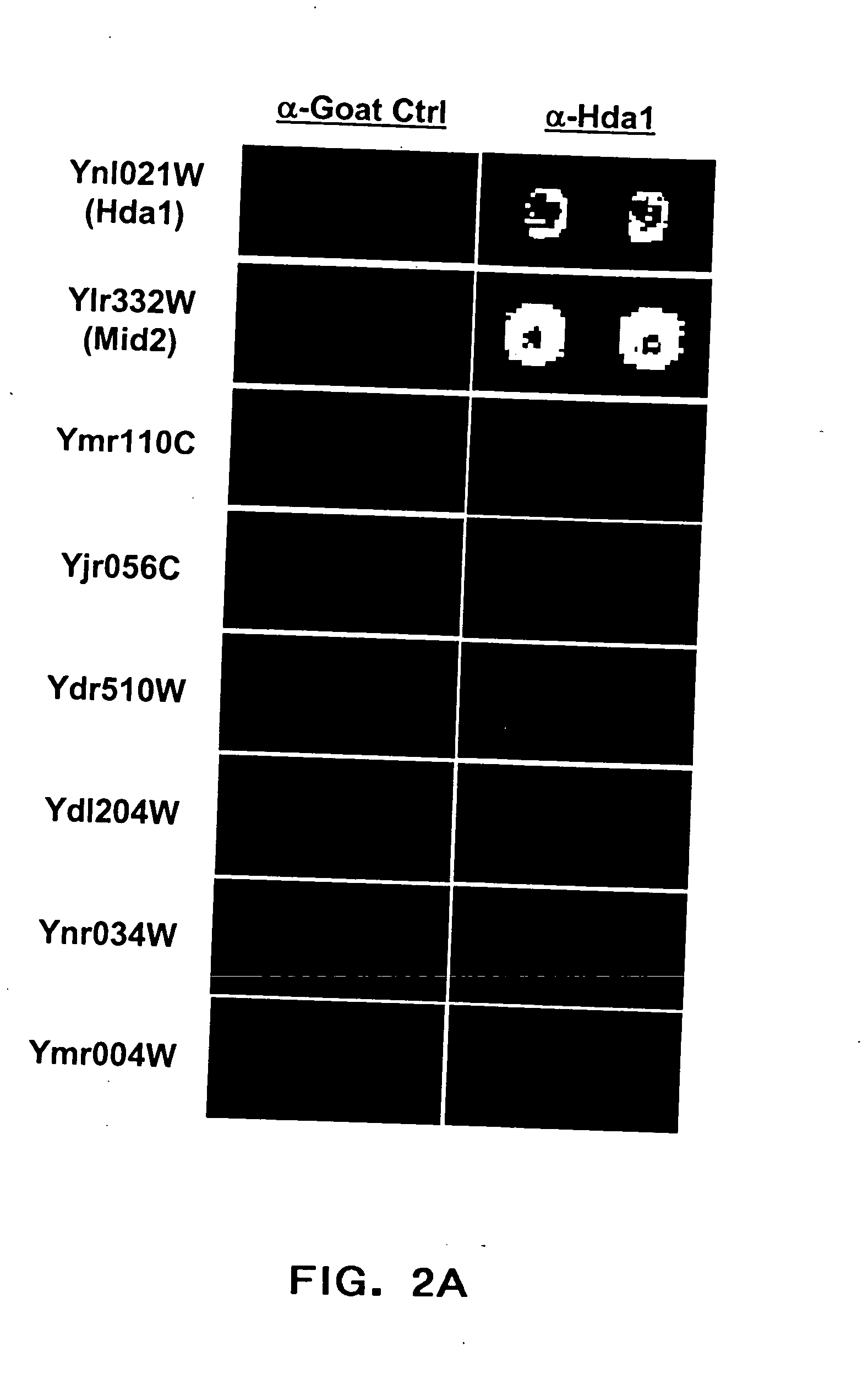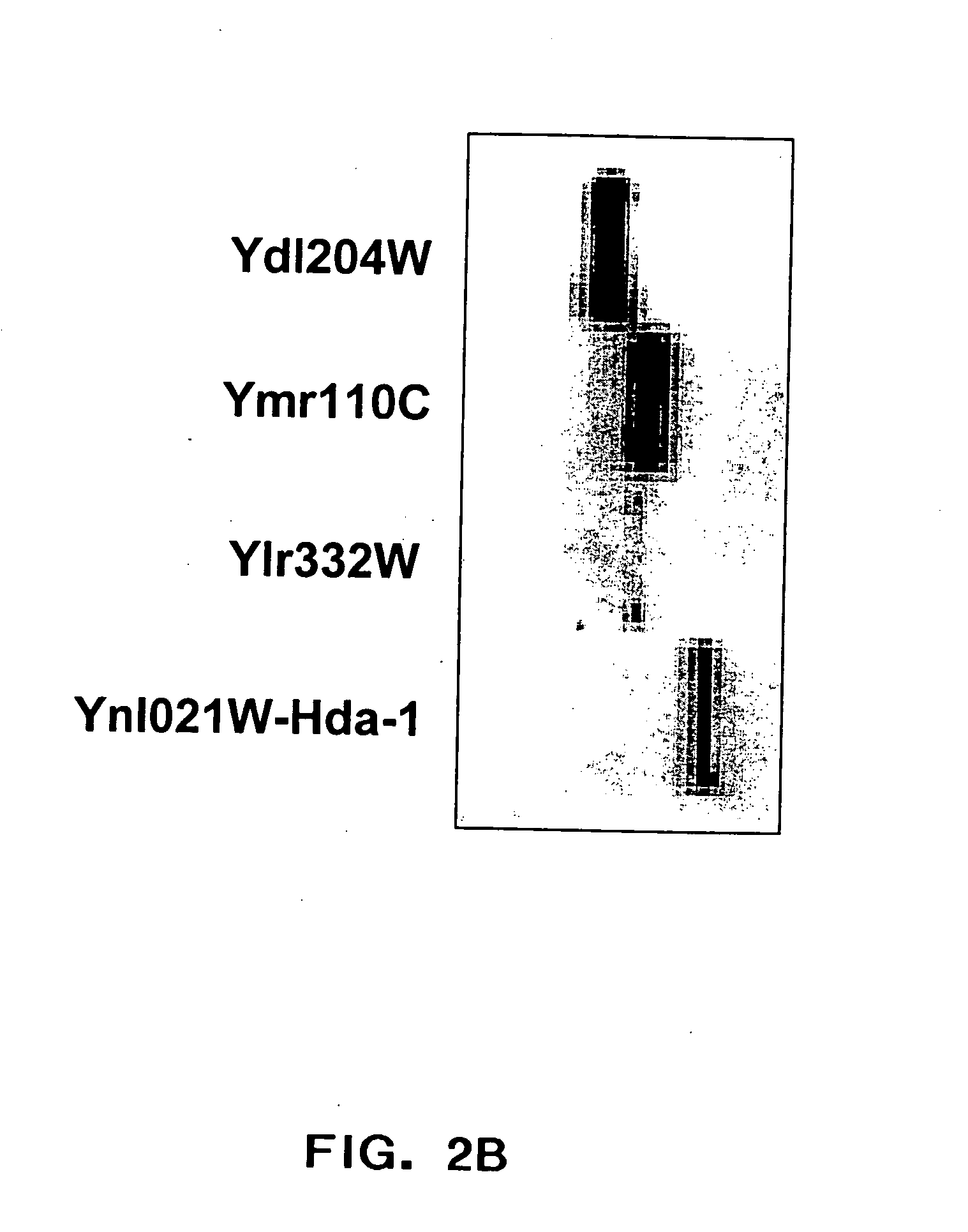Method for the prediction of an epitope
- Summary
- Abstract
- Description
- Claims
- Application Information
AI Technical Summary
Benefits of technology
Problems solved by technology
Method used
Image
Examples
example 1
Analyzing Antibody specificity with Whole Proteome Microarrays
[0167] As an initial test of this approach, a number of polyclonal and monoclonal antibodies against yeast proteins was screened with a yeast proteome microarray and it was found that, in addition to recognizing their cognate proteins (target protein), the antibodies cross-reacted with other yeast proteins (cross-reactive proteins) to varying degrees. Some of the interactions of the antibodies with non-cognate proteins could be deduced by alignment of the primary amino acid sequences of the antigens and cross-reactive protein using a novel algorithm specifically designed for this purpose; however, these interactions could not be predicted a priori without the knowledge of the cross-reactive proteins. The novel sequence analysis algorithm also allows the identification of common epitopes among cross-reactive proteins and the target protein. These findings demonstrate that proteome array technology has enormous potential t...
example 2
Epitope Searching
[0193] Yeast ProtoArray experiments have demonstrated significant cross reactivity of a polyclonal antibody directed against HDA1 (YNL021W) with a number of other proteins (YDR469W, YDL204W, YMR110C, YLR332W). A ‘naive’ search for short stretches of sequence homology among these proteins was performed in an attempt to identify a common epitope.
[0194] 8 amino acid windows of the ‘reference’ sequence, YNLO2 1W, were scanned against all 8 amino acid stretches in each of the ‘cross-reactive’ sequences (YDR469W, YDL204W, YMR110C, YLR332W). For each window, the best match with each cross-reactive sequence was calculated, and the average identity was plotted as a function of reference sequence window (FIG. 12). From this analysis, 3 regions of highest homology are identified (arrows). An alignment of these sequences is presented in Table 2. The 8 amino acid window from the best matching region (region 3) is fully contained within a 20 (21?) amino acid peptide which block...
PUM
| Property | Measurement | Unit |
|---|---|---|
| Linear density | aaaaa | aaaaa |
| Linear density | aaaaa | aaaaa |
| Linear density | aaaaa | aaaaa |
Abstract
Description
Claims
Application Information
 Login to View More
Login to View More - R&D
- Intellectual Property
- Life Sciences
- Materials
- Tech Scout
- Unparalleled Data Quality
- Higher Quality Content
- 60% Fewer Hallucinations
Browse by: Latest US Patents, China's latest patents, Technical Efficacy Thesaurus, Application Domain, Technology Topic, Popular Technical Reports.
© 2025 PatSnap. All rights reserved.Legal|Privacy policy|Modern Slavery Act Transparency Statement|Sitemap|About US| Contact US: help@patsnap.com



